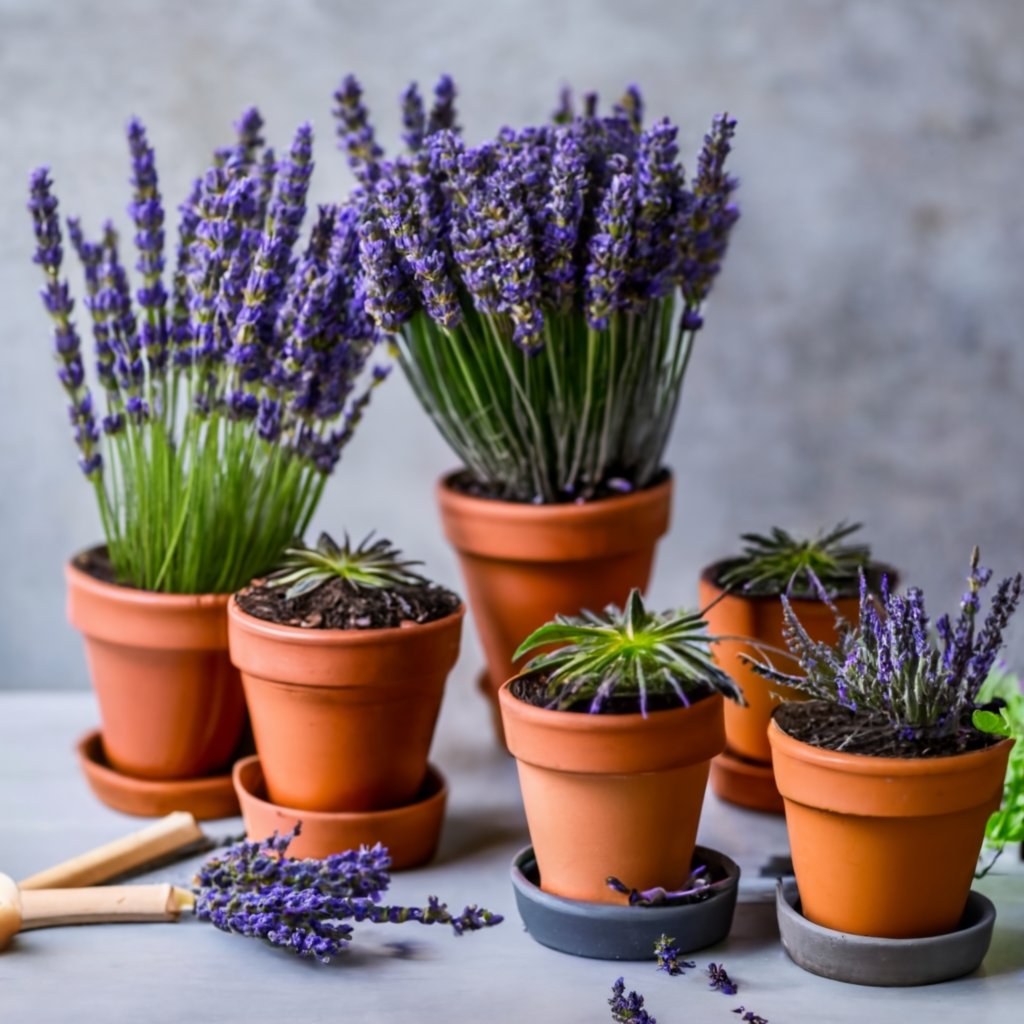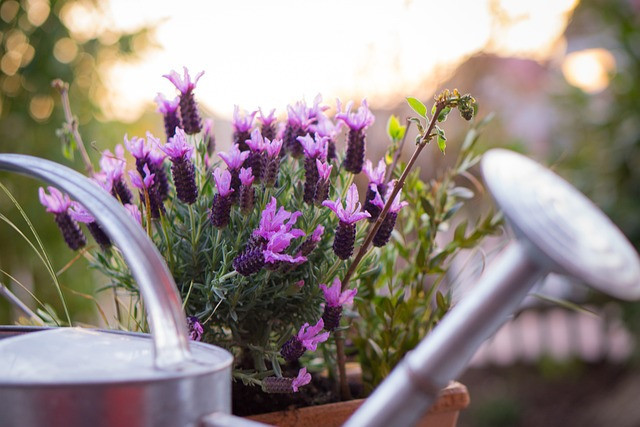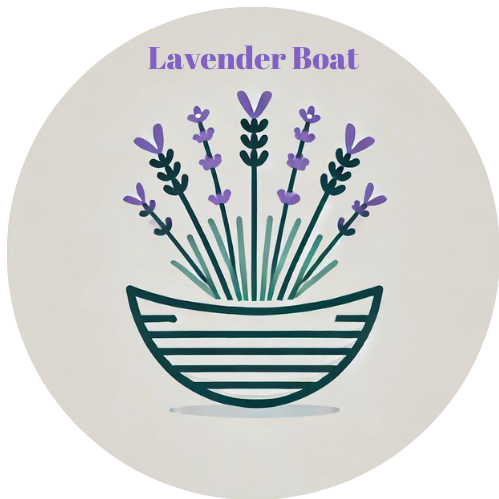Lavender propagation from cuttings or seeds. Cuttings are faster and ensure identical plants, while seeds offer more genetic diversity. Root cuttings in spring or fall. Stratify seeds before planting.
listen to the guide
or read on . .
Multiply Your Lavender Abundance Through Cuttings and Seeds
Once you’ve discovered the many joys of growing lavender, you can propagate even more of these fragrant beauties through cuttings and seeds. Taking cuttings from existing plants creates identical genetic clones while growing new ones from seeds promotes beneficial diversity. Each propagation method has pros and cons to consider. Follow this guide to understand when and how to propagate lavender by cuttings versus seeds.
We’ll journey through selecting optimal mother plants, preparing stems or seeds, rooting cuttings, successfully germinating seeds, and aftercare as these new lavender babies grow. Discover which technique suits your gardening style and resources. Whether you end up snipping cuttings or scooping seeds into starter trays, you’ll gain confidence in sustainably multiplying your blooming bounty. Get ready to let your lavender patch propagate into an abundant aromatic oasis!
When to Start Lavender from Cuttings
Because cuttings quickly produce mature, flowering plants identical to the parent, they are preferable if you:
– want more plants with the exact same features and genetics.
– lack the time required to start plants from seed.
– only have access to one existing plant as the “mother”.
– want fast young plants for selling at the market.
– are unsure if you can provide the delicate care baby seedlings need.
– want to clone a plant with exceptional traits like scent or hardiness.
Take cuttings in spring through early summer once new growth appears and again in fall if winters are mild where you live. Rooting rate declines in peak summer. Follow best practices for the highest success propagating from cuttings.
How to Take and Root Lavender Cuttings
Here’s how to properly take and root lavender stem cuttings:
1. Select healthy stem tips around 4-6 inches long from new non-flowering growth.
2. Trim just below the tip node and remove the lower leaves.
3. Dip the stem end in rooting hormone powder to encourage new roots.
4. Plant cutting stems in sterile potting mix 2-3 inches deep or in a propagation tray.
5. Maintain warm temperature around 70°F and consistent moisture in the soil mix.
6. Rooting takes 2-4 weeks. Gently tug to check for resistance indicating roots.
7. Pot up successfully rooted cuttings in soil amended with perlite or peat.
8. Gradually acclimate young plants to sun and lower humidity before planting outside.
With proper sterilisation, tools, and aftercare, cloning lavender through cuttings is highly effective.
Choosing Healthy Stems for Cuttings
Pick the most vigorous, healthy stems for the best results:
– Select side shoots rather than main branch tips. This avoids damaging the mother plant.
– Choose stems with green pliable tips indicating new growth.
– Look for shoots with robust foliage and no discolouration.
– Pick stems approximately the thickness of a pencil or thinner.
– Take multiple cuttings from different points on each mother plant selected.
– Discard any cuttings with brown spots, damage, or buds forming.
– Cuttings from plants 2-5 years old root most easily.
Propagating from weak, diseased, or flowering stems reduces success. Carefully inspect each stem before taking cuttings. Combine selection from multiple plants to hedge your bets.
Aftercare for Rooted Lavender Cuttings
Once your lavender cuttings have rooted:

– Transplant into pots with well-draining potting mix amended with sand or perlite.
– Gradually expose young plants to more sun over 7-10 days to avoid shock from rapid change.
– Wean plants slowly over 2 weeks from humid conditions to lower indoor humidity.
– Water only when the top inch of soil feels dry. Avoid constant moisture.
– Pinch back tips periodically to encourage bushy growth.
– Transplant into the garden after 4-6 months when grown to an adequate size.
With attentive aftercare, cloned cuttings quickly establish into mature lavender plants ready to grace gardens or planters.
When Starting Lavender from Seed is Preferable
Starting lavender from seeds is smart if you:
– Want genetic diversity versus identical cloned plants from cuttings.
– Wish to propagate rare or expensive lavender varieties affordably.
– Prefer gently starting plants versus cutting stems from mature plants.
– Have breeder seeds for hybridising your own new varieties.
– Can patiently nurture the delicate seedlings through their first year.
– Enjoy watching new life emerge versus instant plants from cuttings.
– Plan to sell young starter plants to other gardeners.
– Want to develop robust, well branched transplants before planting outside.
While slower, seeds offer variability and adaptability. Plus, it’s mesmerising to witness brand new seedlings unfold.
How to Successfully Start Lavender from Seeds
Here are some tips for the best results growing lavender from seeds:

– Stratify seeds in the refrigerator 1-2 months before planting to simulate winter dormancy.
– Start seeds indoors 6-8 weeks before your region’s last frost date.
– Plant seeds shallowly, just 1⁄4 inch deep in sterile starter trays.
– Maintain a warm soil temperature of around 70°F for the fastest germination.
– Cover trays with plastic dome lids to retain moisture during sprouting.
– Provide 14 hours of light daily with fluorescent grow lights if not sowing in spring.
– Transplant into cell packs or small pots once the first true leaves appear.
Take your time and be patient, as lavender seeds are slow starters. But the reward of diverse new additions is worth the wait!
Providing Care for New Lavender Seedlings
Baby lavender plants from seed require extra care:
– Water young starters carefully, avoiding soggy soil that invites fungal disease.
– Allow the top of the soil to get dry between thorough watering.
– Ensure excellent drainage using very sandy potting mixes amended with perlite.
– Keep seedlings indoors under grow lights for 14-16 hours daily for the first winter if started in fall
– Transplant up one pot size as they grow, spacing plants to avoid crowding.
– Introduce outdoor sun and wind gradually over 2 weeks to harden off before spring planting.
– Pinch growing tips occasionally to promote bushy growth.
With diligent care, home-sown lavender seedlings mature into garden-ready plants for transplanting.
The Benefits of Each Propagation Method
Both cuttings and seeds offer pros and cons:
Cuttings:
– Fast maturity
– Identical offspring
– Multiplies special plants
– Can damage mother plants
– Susceptible to disease transmission
– Limited diversity
Seeds:
– Genetic variability
– Affordable way to propagate
– Fun to start a new life
– Slower to reach maturity
– Requires more delicate care initially
– Offspring show random variation
Determine your goals, timetable, and comfort level with plant care to pick the ideal propagation path for your needs.
Final thoughts
Lavender’s popularity means keeping up with demand for these enchanting plants often necessitates propagation at home or for commercial growing. While beginners may be intimidated to clone plants via cuttings or germinate finicky seeds, mastering both techniques can prove useful for any grower. Follow proper procedures and success rates are high for multiplying your aromatic bounty.
Yet patience and persistence are vital, especially when nurturing tiny seedlings. Attentive care replicating ideal outdoor conditions gives baby lavender the best start whether sprouted or snipped into being. Keep good records to refine techniques season after season. Over time, gain confidence in your green thumb skills to the point propagating becomes second nature.
No longer will you need to purchase plants when the urge strikes to add a new variety to the garden or replace a struggling plant. To satisfy spontaneous lavender whims or restock business inventory, rely on your propagation prowess. Soon these skills will empower you to increase floral abundance year after year through homegrown heritage and expanded diversity.






